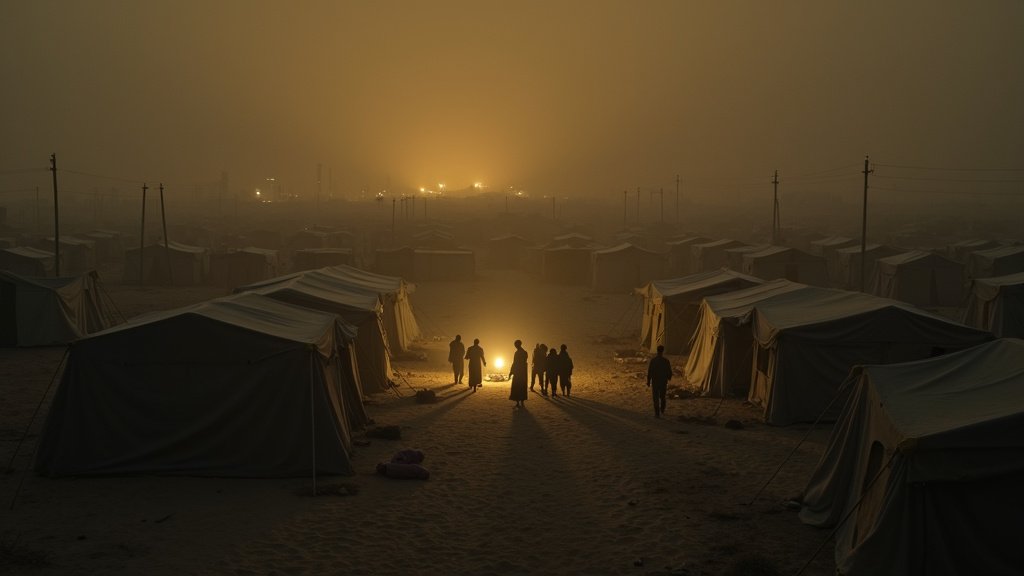Latest reports from the world indicate a critical juncture in the protracted conflict in Gaza, as Hamas has reportedly accepted a new ceasefire proposal, igniting a fragile flicker of hope for a de-escalation of hostilities. This development comes as the region continues to grapple with a devastating humanitarian crisis and ongoing military operations, keeping global attention firmly fixed on the unfolding news.
The Latest Ceasefire Proposal
The proposed deal, brokered by key mediators Egypt and Qatar with support from the United States, outlines a comprehensive framework for a temporary cessation of fighting and a path towards a more lasting peace. The core components of the proposal include a 60-day pause in military operations, a partial withdrawal of Israeli troops to a specified buffer zone, and a significant increase in humanitarian aid flowing into the besieged Gaza Strip. Crucially, the agreement also details a phased exchange of Israeli hostages held by Hamas for Palestinian prisoners. Under the reported terms, approximately half of the remaining 20 living Israeli hostages, along with the bodies of others, would be released in return for about 150 to 200 Palestinian detainees.
This recent push for a truce follows intense, indirect negotiations in Cairo, mediated by Egyptian and Qatari officials. Qatar’s foreign ministry spokesperson noted that Hamas’s acceptance of the proposal was positive and almost identical to a previous plan that Israel had reportedly agreed to. Such diplomatic efforts are a beacon amidst the continuous flow of troubling news from the region.
Israel’s Stance and Escalating Offensive
While Hamas has signaled its agreement, Israel’s response remains cautious and complex. Prime Minister Benjamin Netanyahu has maintained a firm public stance, insisting that any lasting peace agreement must include the release of all hostages at once, the complete disarmament and demilitarization of Hamas, and continued Israeli security control over Gaza. He has also stipulated that an alternative civilian government, neither Hamas nor the Palestinian Authority, must be established. Despite these public declarations, some Israeli officials have indicated that Jerusalem is indeed reviewing the phased hostage-ceasefire deal, creating an intricate diplomatic landscape.
Adding to the complexities, Israel is reportedly preparing for a new large-scale offensive to take control of Gaza City. This planned operation, which involves a significant call-up of reservists, has drawn widespread international condemnation and raised alarm among humanitarian organizations, who warn of potentially catastrophic consequences for the already beleaguered civilian population.
A Deepening Humanitarian Catastrophe
The humanitarian situation in Gaza has deteriorated to unimaginable levels, forming a central part of distressing world news. Since October 2023, the conflict has claimed the lives of over 62,000 Palestinians, with more than 156,000 wounded. Among the casualties, nearly 19,000 children have been killed, highlighting the devastating impact on the most vulnerable. Famine is actively unfolding, with reports of deaths from starvation and disease becoming increasingly frequent. A severe heatwave has compounded the crisis, leading to widespread dehydration due to extremely limited access to clean water.
Hospitals are operating far beyond their capacity, and essential medical supplies are critically scarce. Humanitarian aid, though desperately needed, continues to be insufficient and inconsistently accessible due to ongoing hostilities, blockades, and stringent new registration requirements imposed on international non-governmental organizations. These restrictions have hampered the ability of aid agencies to deliver life-saving supplies, with numerous reports of casualties along aid convoy routes where desperate civilians attempt to access food.
Mass displacement remains a grim reality, with over 780,000 new displacements recorded since March 2025 alone. More than 86% of the Gaza Strip is now designated as an Israeli-militarized zone or falls under displacement orders, raising profound concerns about the potential for forcible transfer of the population.
Global Reactions and Calls for Peace
The ongoing crisis and the stalled ceasefire efforts have triggered widespread reactions across the world. International mediators, including Egypt, Qatar, and the United States, are intensifying their diplomatic engagements, urging all parties to agree to a comprehensive and lasting ceasefire. Various countries, including Australia, Belgium, Canada, France, Japan, and the United Kingdom, have joined calls for increased humanitarian access and protection for civilians.
Public sentiment has also been vocalized through mass protests in cities like Tel Aviv, where tens of thousands of Israelis have demonstrated, demanding a deal to secure the release of the remaining hostages and bring an end to the war. Beyond the Middle East, the global community watches with bated breath, as evidenced by actions such as the Italian football coaches association calling for a ban on Israel from international football and Microsoft workers protesting their company’s ties to the Israeli military. United Nations officials continue to emphasize that there is no military solution to the conflict and that the immediate protection of civilians and the unhindered flow of aid are paramount.
As the world waits for Israel’s official response to the latest proposal, the urgency for a breakthrough in negotiations grows. The humanitarian catastrophe in Gaza demands an immediate and sustained resolution, underscored by the collective hope for peace in a region long plagued by conflict.

